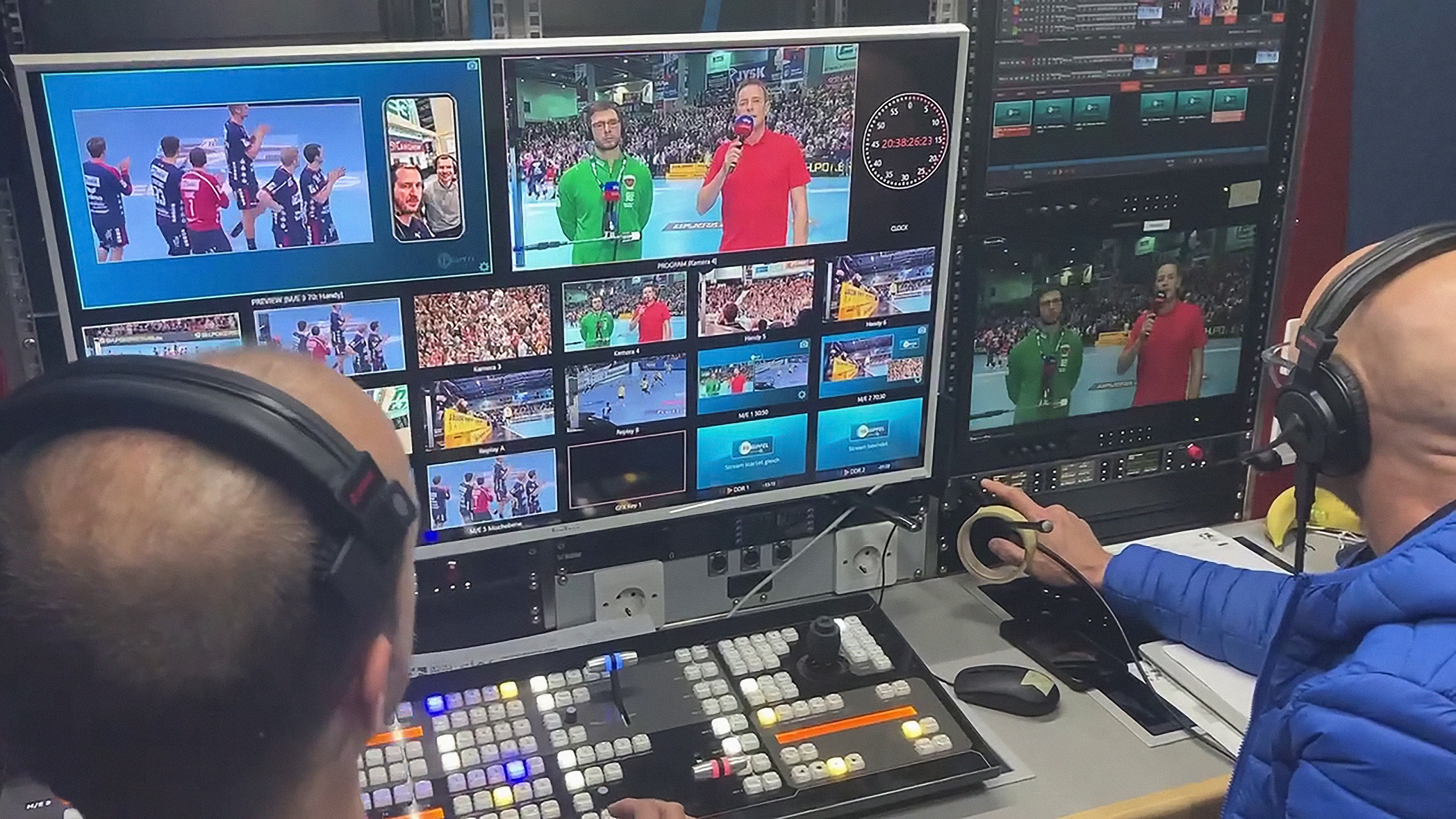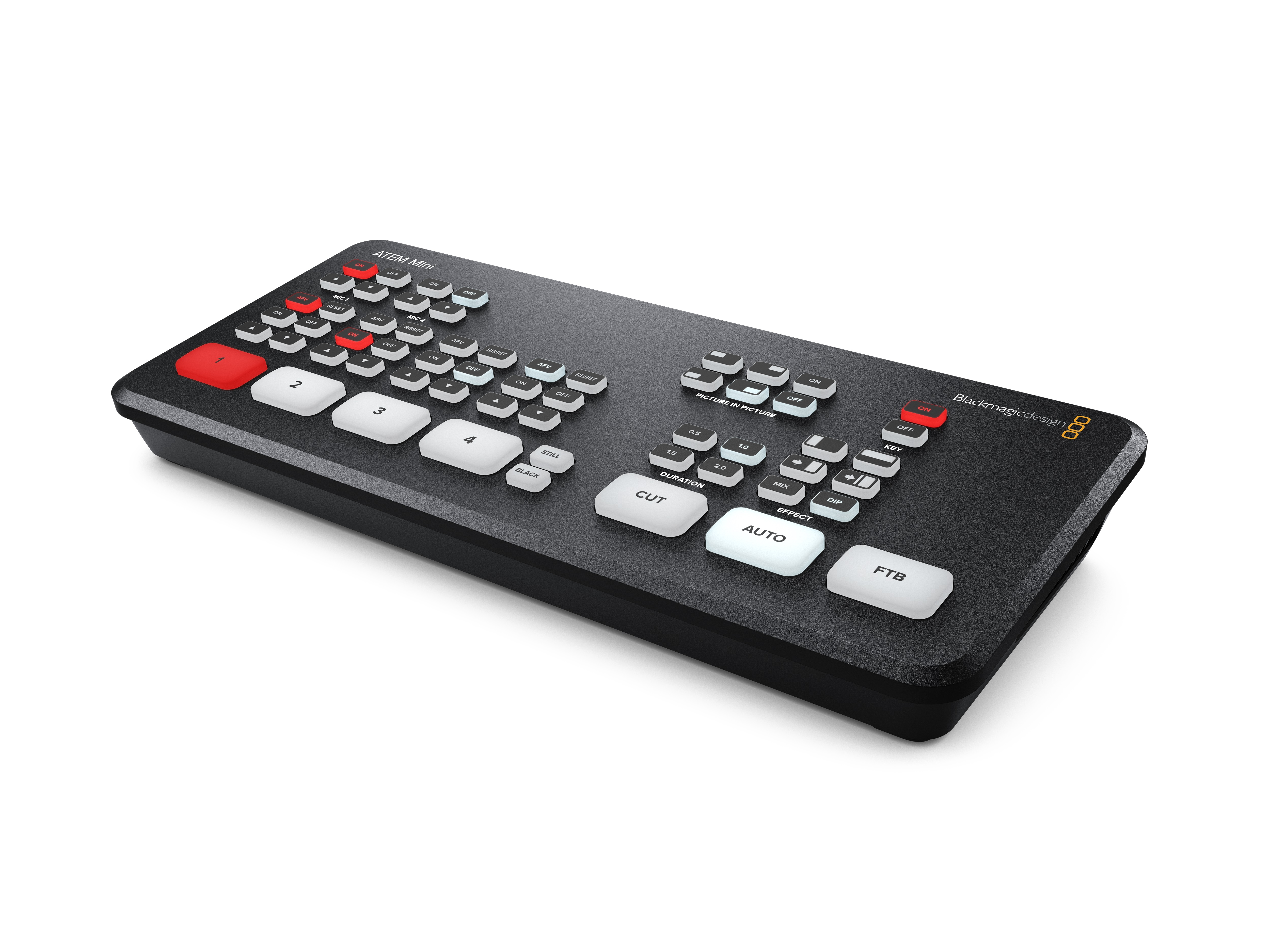Switching at Your Service
The production switcher is undergoing serious changes, both technological and commercial

LONDON—The production switcher is a foundation of any studio gallery or OB truck and any change in how it works marks a fundamental shift in the way TV operations are run. This is particularly the case for switchers right now, not just because of the increase in remote working but also a general reappraisal of the best interface for this key function.
“In the past the only switcher conversation was around how many mix effects [M/Es] and keyers there were,” says Niels Borg, senior product manager for automation and switchers at Vizrt. “Now, the conversation has shifted toward a focus on how flexible a production system is. Customers want to know whether it is baseband only, IP friendly, where it can be deployed and if they are able to mix and match sources and transcode on the fly. Forward-looking switchers are now software powered.”
Borg observes that IP is one of a “powerful” trio, which is completed by software and the cloud. “By moving from SDI, where linear limitations to some degree cause linear production thinking, to IP-software-cloud, a whole new reality of production opens up—particularly with what is achievable in terms of content,” he added.
FLEXIBILITY AND CROSS-POLLINATION
In terms of market trends, Tim Felstead, product and solutions marketing manager for live production at Sony Professional, sees the most important as flexibility and cross-pollination.
“Producers are looking for switcher systems that fit a wide gamut of production scenarios, which have inbuilt scalability and can be used via flexible user interfaces with a view to reducing operational costs,” he says. “On the other hand, because of the increased demand for remote and distributed production, with operators and [locations] decoupled, we’re also seeing different production levels being implemented by broadcasters. The aim is to be efficient and tailor solutions to the real requirements of the output.”
Felstead adds that this has resulted in increased demand for a blend of technologies in switchers.
Get the TV Tech Newsletter
The professional video industry's #1 source for news, trends and product and tech information. Sign up below.
“Driven by increasing capacity in GPUs [graphics processing cards] and associated software, many tasks can be offloaded from FPGAs [field-programmable gate arrays],” he explains. “CPUs [central processing units] are currently still restricted in capacity for high-end switchers, yet continue to evolve in terms of clocks and cores.”
FRIENDLY TO FIRST-TIMERS
As is well known by now, the COVID pandemic accelerated the move towards remote production that was already happening. This has called for greater flexibility and functionality from production switchers but another development in user requirements is taking that even further.
“Over the last two years, almost every industry has adopted video streaming in some capacity, whether to reach employees and aid internal communications or stay connected with customers,” says Darren Gosney, technical sales manager at Blackmagic Design (BMD) EMEA. “As a result, there are more inexperienced or untrained operators working with production switchers for the first time. They need systems that are simple to set up, quick to learn and scalable over time.”
As part of this, BMD offers a choice of how to control its switchers, all of which can be run over an IP connection.
“This means operators who want a traditional hardware control surface can take that option,” Gosney says. “However, users moving into live production for the first time can begin working on a software interface before migrating to hardware over time.”
Offering traditional, pro broadcast operators and the new breed of untrained operators a selection of control options is now a priority for all manufacturers. Nigel Spratling, vice president of production switchers and video servers at Ross Video, observes that among the trends influencing the design of switchers is the need to reinvent the long established M/E architecture, coupled with creating “denser” devices that have more capacity in a smaller platform.

“Another trend is for re-engineering existing technologies or platforms to create new hybrid production environments, adding switcher capability to a video routing and processing platform,” Spratling says. He adds that the expanded market for production switchers is also having considerable influence.
“In the U.S., the term ‘broadcaster’ used to refer almost exclusively to call letter stations and national networks,” he said. “The term has evolved over the years and now encompasses virtually any entity that distributes its productions to a broad segment of its viewing audience. But regardless of market vertical, distribution method or workflow, core requirements for a switcher continue to be reliability, flexibility and ease of operation.”
TWO SIDES TO THE MARKET
Graham Sharp, chief executive of Broadcast Pix, highlights that last factor as a crucial feature for production switchers, regardless of the operator’s level of knowledge or experience.
“It’s now a game of two halves, with the high end on one side and prosumer on the other,” he says. “That last category has grown dramatically, with demand in the corporate and church sectors. It’s no longer about feeds and speeds and although some companies are trying to convince people everything should be 4K, the bigger impact has been made by IP. The fact that you can now control things remotely means that [the priority] becomes ease of use.”

Sharp continues that non-professional users are likely to either use less than five percent of a M/E panel or not understand it at all. But, he says, even broadcast veterans do not necessarily want all the buttons, bells and whistles on control surfaces today, preferring instead to load presets into a few macros. This change in attitude, he says, informed the design of the ChurchPix live production and streaming system.
“All the camera moves can be pre-set in templates and controlled from a touchscreen,” Sharp says. “We also have a client who controls the broadcast of town halls from a single office, remotely connecting to IP cameras on-site. This is production switching as a service and is similar to what some broadcasters have done by broadcasting several soccer games a day from the same control room.”
DIFFERENT INTERFACES
While Sharp is of the opinion that M/E’s will remain in the high-end market until people are “weaned off it,” Greg Huttie, vice president for production switchers at Grass Valley, comments that the use of the older interface as opposed to touchscreens is about the preferences of individual technical directors and vision mixers.
“It comes down to how the interfaces differ, the feel and tactility,” he says. “But at the same time TDs do like automation, the recall and different effects. Ultimately, when a director or producer asks for something, the engineer in charge should be able to give it to them.”
In terms of the emerging switching as a service trend, Huttie says Grass Valley has made it part of its AMPP (Agile Media Processing Platform), which is designed to work in cloud-based live production scenarios.
“What it’s about is if you don’t have the hardware on location, you can link into the cloud and utilize what you want or need when you need it,” he explains. “In effect, there is now a greater focus on the future and looking at customers’ needs. It’s about how you fit into the program, whether it’s a small talk show or the Super Bowl. Broadcasting is now about producing more content and what switchers fit best.”
The switcher will continue to be at the heart of broadcast productions in the future but where it is located, how it is controlled and—if switching does indeed become a service—on what business model it operates are all key questions still to be answered.
